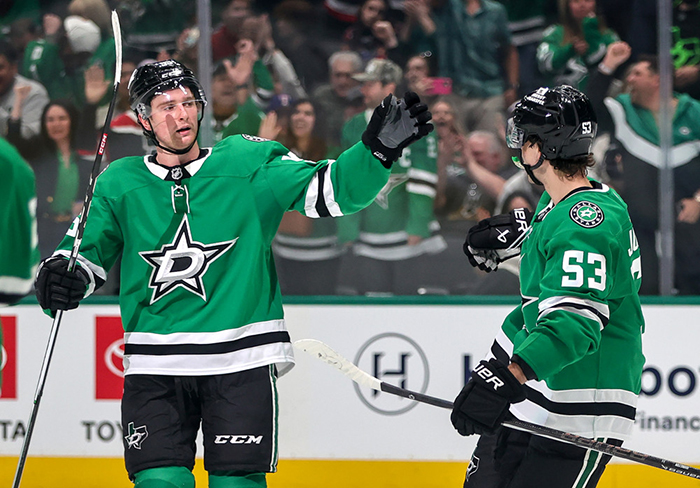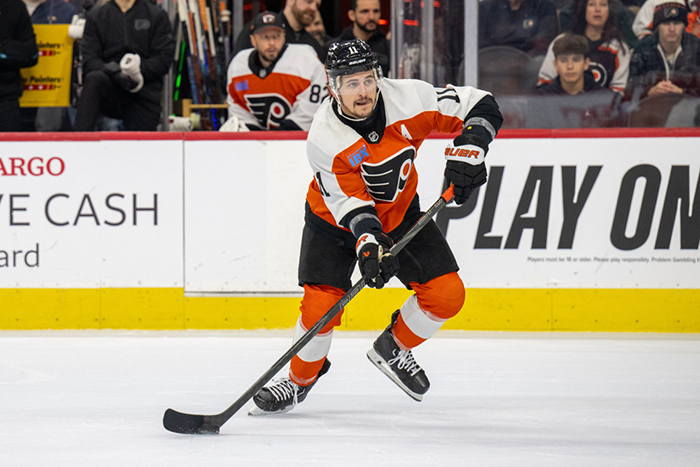The first day of NHL free agent season was yesterday. It occurred to me the other day that the 2025-26 season marks 20 years since the NHL salary cap first came into existence. The cap ceiling during the 2005-06 season was $39 million with a $21.5 million floor.
Now compare that to this: For the 2025-26 season, the cap floor is $70.6 million with a $95.5 million ceiling.
i played most of my career during the pre-cap era. The big-market teams, including the Philadelphia Flyers teams under Ed Snider, enjoyed a major advantage. I never really understood why Mr. Snider and the other teams at the top of the food chain ever fell in line with a new system that ate into their competitive advantage.
True story: During the 2003-04 season, Gary Bettman told all teams to balance the books at the trade deadline. If a deadline buyer added X amount in salary, they should subtract roughly the same amount. There was a lockout coming and a war over a salary cap. The League didn’t want the traditional big spenders to keep spending freely and then turn around and say a cap was needed for league survival.
I was a pre-cap salary casualty
Mr. Snider was never shy about telling the league to pound sand if he didn’t think a policy benefited his beloved Flyers. This time, however, the Flyers complied with the directive. Amid other moves such as adding Alexei Zhamnov, Philly subtracted Eric Weinrich and me in salary dumps.
What happened in the 2004 stretch drive and playoffs? The Flyers were riddled with injuries on defense: Eric Desjardins, Marcus Ragarsson and Kim Johnsson all suffered significant injuries.
Rico didn’t suit up in the playoffs at all. Ragnarsson missed four games. Johnsson missed three games. Neither Kim nor Marcus were ever close to 100 percent again even after they returned.
As a result, the Flyers had to use Sami Kapanen, a career-long forward, as a defenseman. Mattias Timander, the 7th defenseman, ended up having to play 20-plus minutes a game. Both guys held their own, but neither would have been forced into that situation if Weino and me were still there.
The Flyers fell one win short of reaching the Stanley Cup Final. Danny Markov and rental player Vladimir Malakhov played extremely well. Even so, the attrition added up. Bob Clarke has said the Flyers would have beaten Tampa in the Eastern Conference Final and went on to win the Stanley Cup if he hadn’t been suggested (read: semi-forced) to deplete our blueline to balance the add/subtract books.
We’ll never know. But I think Clarkie was right.
Back to Philly in Salary Cap Year 1
I spent the rest of the 2003-04 season with the Dallas Stars. It wasn’t a bad gig. Sergei Zubov was my defense partner. Everyone liked Rick Wlson, our assistant coach in charge of the defense. Dave Tippett was a good head coach. Unfortunately, we lost to Colorado in the first round of the playoffs.
Then the lockout hit. The 2004-05 season was cancelled. By the time the league returned for the 2005-06 season, we had a salary cap. I was a 33-year-old unrestricted free agent. In all honesty, I’d lost a step. Hockey was also no longer the first thing on my mind. I had personal issues that took priority.
Even so, I want to try to keep playing. Clarke contacted my agent with an offer: If I accepted a reduced role on the Flyers’ blueline and a one-year contract for the NHL minimum ($500,000 at the time but salary numbers are gross totals before all the deductions that come out). I didn’t care. I was happy to come back to Philly and try to extend my career.
I’d spent nearly all of my career playing on one of the Flyers’ top-two pairings. Most older Flyers fans know that I had a long-running pairing with Desjardins. Before that, I played mostly with Dmitri Yushkevich my first season and then Kjell Samuelsson my second year,
In my final NHL season, I mostly played on the third pairing or as the number seven. I also had various injuries. The most serious injuries were a hip issue and a head injury. I got into 47 regular season games. I was unable to play in the playoffs. The handwriting was on the wall. My NHL playing days were over.
Hindsight is 20/20
Twenty years after the NHL implemented the salary cap, the NHLPA has done fine. The league has certainly done well financially. I don’t know that the product on the ice in the salary cap age is necessarily better. However, I guess that’s a matter of opinion.




“I don’t know that the product on the ice in the salary cap age is necessarily better. However, I guess that’s a matter of opinion.”
FWIW, I watched a lot of playoffs this year and thought it was good hockey. I would guess the fans of teams doing pretty well these days think the product is just fine.
Great insight Chris of the time pre/post salary cap NHL. Large market team’s like Flyers pre-salary cap did what they want to do to win. Post salary cap NHL is causing the Flyers issues for the last 20 years due to bad contracts, ineffective scouting and ineffective development approaches.